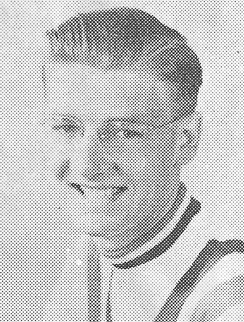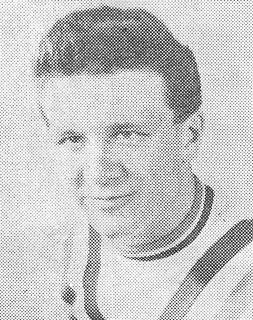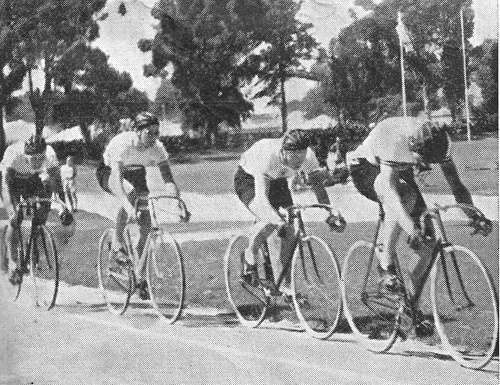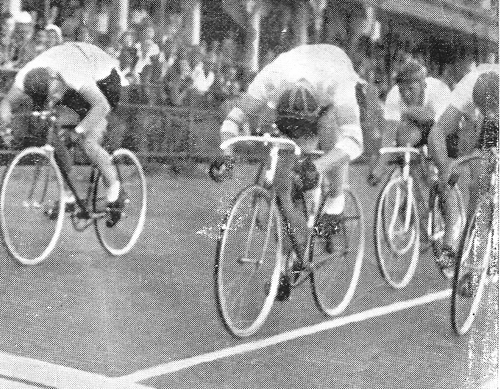The 1952 British Track Team in South Africa: Prelude to the Helsinki Olympics.
Posted: Tuesday 18th August 2020
1952 was an Olympic year with the XV Olympiad being held in Helsinki, Finland, during the month of July. In January 1952 a six-man British NCU team arrived by ship in Cape Town from the UK for a six week racing tour of South Africa. The team crisscrossed the country by road and rail to compete on tracks in major towns and cities. This is the story of that tour, focusing on its highlights and relating it to the cycling events at the 1952 Olympics later in the year.
Background to the 1952 tour
The 1952 British track team was the second to tour South Africa. In early 1948 a six-man British team had raced on tracks in both Southern Rhodesia (now Zimbabwe) and South Africa. This had proven to be an excellent preparation for the 1948 London Olympics, with several of the team’s members going on to win track medals at the Games. This undoubtedly prompted the British cycling governing body, the NCU, to send out the 1952 team. It would enable their potential Olympic track cyclists to train and race in the warmth of the South African summer.
The 1952 British team (see images below)
The team members were:
- Tommy Godwin (team captain, aged 31)
- Lloyd Binch (20)
- Wally Box (24)
- Don Burgess (18)
- Alan Geldard (24)
- Ken Mitchell (20)
This was a youthful team of Olympic hopefuls guided by the experienced Godwin who had won two track bronze medals at the 1948 London Olympics. Binch was the team’s leading sprinter while the others were all-round trackmen.
When the team disembarked in Cape Town they were met by Mr. J.K. Wybenga. He was a cycling official from the diamond mining town of Kimberley in the Griqualand West region. He had been appointed by the hosting SAAA&CA (South African Amateur Athletics and Cycling Association) to serve as the team’s local manager.
South African cycle sport and the British influence
Competitive cycling in South Africa had its origins in the late 19th century. It originated largely with British cycling enthusiasts who were drawn to the country at the time as the British Empire expanded in the region. Throughout most of the 20th century the sport remained modelled on the British pattern. Typically this involved summer track racing on large outdoor shallow banked tracks with most races being based on the Imperial mile. By the post-WWII period, the majority of South Africa’s larger cities boasted dedicated outdoor cycling tracks.
Historically, South African cycle sport was racially segregated and was to remain so until late in the 20th century. White cycling was administered by the SAAA&CA up until the mid-1950s. The 1952 British touring track team competed exclusively against white South African cyclists affiliated to the SAAA&CA. At the time the SAAA&CA was fully recognised internationally by the UCI as the legitimate cycling governing body in South Africa.

The 1952 British team captain, Tommy Godwin, was a member of the British track team which had toured South Africa in 1948. This was the first foreign cycling team ever to have visited the country. It was hugely successful, with the track meetings attracting large spectator numbers. The 1948 British team members were: Lew Pond (captain), Alan Bannister, Tommy Godwin, Ron Meadwell, Dave Ricketts and Ian Scott. ( ‘The 1948 South African vs. Great Britain track omnium’ ).
The high standard of the 1948 touring team’s performances came as a shock to South African cyclists. The Britons triumphed in meeting after meeting across the country. This culminated in their overwhelming victory in the solitary international. Held on the massive 500 yards plus cement surfaced De Beers stadium in Kimberley, it took the form of a multi-event omnium. The British team won it by 32 points to the South Africans’ meagre 5 points. The result prompted a rethink by the SAAA&CA with regard to selections for the 1948 London Olympics. Ultimately, only one of the eight South African cyclists from the Kimberley international, Wally Rivers, gained selection for the 1948 Games.
By 1952, however, a new generation of cyclists had emerged in South Africa and the second British touring team was to meet with tougher opposition than that encountered by the 1948 team.
The organisation of the 1952 British track tour and SA cycle sport
Like its predecessor, the 1952 British team faced a busy schedule of track meetings in different centres. This involved travelling long distances by both road and rail, including a trip to Bulawayo in what was then Southern Rhodesia. In South Africa itself the team was due to race at meetings in Paarl near Cape Town as well as Johannesburg, Krugersdorp, Kimberley, Pietermaritzburg, Durban and Port Elizabeth. Two internationals were scheduled: one on the Malvern track in Johannesburg; the other in Paarl.
By the early 1950s, the metropolis of Johannesburg had emerged as the epicentre of South African competitive cycling. Members of the city’s three clubs – Troyeville CC, Southern Polytechnic CC and Rand Roads CC – dominated the sport nationally. Administratively, the Johannesburg region had set a precedent by breaking away from organised athletics and establishing the Southern Transvaal Amateur Cycling Union (STACU). This was ultimately to lead to the establishment of the South African Cycling Federation (SACF) in the mid-1950s. It was the SACF which was to come into conflict with the world governing body, the UCI, in the 1970s over racial discrimination in the sport. It resulted in South African cycling’s suspension by the UCI and this remained in force until the ending of apartheid in the early 1990s.
The racing on the 1952 British track team tour
“Soon after their arrival in Cape Town the British team of amateur cyclists were out on the new Green Point Track for a limb loosener, and then five of the six left by road to cycle the 36 miles to Paarl for their opening match against the Western Province. Lloyd Binch, their crack sprinter, was the only member of the team to travel by car to Paarl.” The South African Cyclist, February 1952.
In the same issue of the magazine, the inaugural Paarl meeting was reported under the headline: ‘British Cyclists Overwhelm Western Province’. The British riders won every one of their six events: quarter mile, one mile, 1000m individual time trial, 4000m team pursuit and ten mile. It was to become a familiar pattern, echoing the achievements of the 1948 team.
The team later competed against a Southern Rhodesia team in Bulawayo, 2000 kilometres distant from Cape Town. The SA Cyclist headline read: ‘Two Rhodesian Records Broken by British Team – Another Grand Slam’. Tommy Godwin set a new Rhodesian record for the I000m TT of 1:15.2, bettering the old record of 1:15.5. In the 4000m team pursuit the combination of Godwin, Box, Burgess and Mitchell recorded a new best time of 5:8.2. However, after returning to South Africa, the team began to encounter stiffer opposition.
In Port Elizabeth on the South African east coast the tourists were challenged by an Eastern Province selection. Binch won the match sprint event, Mitchell the 4000m individual pursuit and Britain the 4000m team pursuit. The big upset came in the prestigious one mile race where the local junior, Abe Jonker, won in a fast time of 2:25.7, with Burgess second and Geldard third. The headlines in the SA Cyclist read: ‘Eastern Province Cyclist scores First Win against British Cyclists’. The scene was set for the two internationals.
The 1952 South Africa versus Great Britain ‘Tests’
Each ‘test’ took the form of an omnium with the teams contesting a series of different events including a tandem match sprint. Points were accumulated over the course of each meeting with the team achieving the best overall score on each occasion being declared the omnium winner.

The first international was held on the Malvern track in Johannesburg, the second in Paarl. The choice of Paarl as a venue was somewhat controversial in view of the recently completed track in Cape Town. However, Paarl has a long cycling history extending back to the late 19th century, with the first of its celebrated annual Boxing Day track meetings being held in 1897. The centrepiece of this meeting, the 25 mile event, has been won by many top trackmen down the years.
In both of the 1952 omnium contests the British team faced a seven-man South African squad which included a specialist tandem pair. The South African team was: George Estman (captain), Bobby Fowler, Johnny Ramsay, Ray Robinson, Tommy Shardelow, Jimmy Swift and Rudi Vorster. Ramsay and Vorster were the national tandem sprint champions at the time. Estman had competed in the 1948 Olympics but the other team members were all newcomers to international competition.
“The first ‘test’ was held under floodlights at Johannesburg’s Malvern stadium and it attracted a large and enthusiastic crowd. The turning point proved to be the 4000 individual pursuit, with Bobby Fowler representing the home nation and Ken Mitchell riding for Great Britain. To quote one account of the contest:
The test hinged on who would win the 4000m individual pursuit – Bobby Fowler versus Ken Mitchell. All the spectators held their breath as the pistol cracked and the men began to circle the track … At one lap they were level, but Mitchell began to gain on the second and increased his lead by the third. By the end of the fourth lap, at the half-way mark, the Englishman was well in the lead. It looked as if Fowler was beaten, but the crowd came to life again after five laps; the gap seemed a little narrower. The spectators screamed themselves hoarse as Bobby clawed himself level with Ken during the next two laps, then, unbelievably, continued to accelerate to the finish line. It was victory for South Africa, Bobby Fowler … the S.A. 4000 metres record had been pulverised … ” Tom Learmont. Cycling in South Africa. (1990) p.75.
The Johannesburg ‘test’ ended with South Africa winning 5-2 and the second test resulted in a 5-1 victory for the South Africans. Five members of the triumphant SA team were selected to represent South Africa at the 1952 Olympics: Estman, Fowler, Robinson, Shardelow and Swift. It was to prove a memorable Olympics for SA cycling.

Cycling at the 1952 Helsinki Olympics
South African cyclists participated in all the cycling events at the 1952 Olympics: match sprint, 1000m individual TT, 4000m team pursuit, tandem match sprint and also the road race. Overall, they fared better than the British in the medal stakes in Helsinki, winning two silvers and a bronze to Britain’s one bronze medal. South Africa’s only disappointments came in the match sprint and the road race.
In the 4000m team pursuit, South Africa won the silver medal behind Italy while Great Britain took the bronze. In the tandem match sprint the South African pairing of Ray Robinson and Tommy Shardelow were beaten in the final by the Australian team of Russell Mockridge and Lionel Cox. Ray Robinson won the bronze medal in the 1000m individual time trial behind Mockridge (Australia) in 1:11.1 and Italy’s Mario Morettini (1:12.7). Robinson’s time was 1:13.0.
Three of the South African team pursuit silver medallists also participated in the 190.4km Olympic road race: George Estman, Bobby Fowler and Jimmy Swift. None of the three finished the race won by the Belgian André Noyelle in a time of 5:06:03.4. The best British finishers were the brothers Des and Brian Robinson, 26th and 27th respectively, both in 5:18:08.9. Brian Robinson subsequently enjoyed a successful career as a Continental professional roadman.
The 1952 Helsinki Games were the most successful ever for South African cyclists. After the 1960 Rome Olympics, South Africa was excluded from the Games by the IOC because of apartheid in sport. It was to be more than 30 years before South Africa was readmitted to the Olympics. This occurred at the 1994 Barcelona Olympics by which time the apartheid era in South Africa was over.
Looking back, all the indications are that the 1952 tour of South Africa by the British track team was an important catalyst for the successes of the South African cyclists at the XV Olympiad in Helsinki in 1952.

Acknowledgements
I am indebted to Garth ‘Faggi’ Thompson for the loan of a copy of the souvenir issue of The South African Cyclist (February, 1952) marking the 1952 British track team tour. Information contained in this forms the main basis of this article.
This souvenir issue of the magazine also contains numerous adverts for ‘sports’ bicycles. One is for a ‘Phillips sports’ machine complete with drop handlebars and produced by ‘Hercules & Phillips Cycles (South Africa) Ltd., Springs, Transvaal’.
The advert below for the ‘BSA Sports Model’, appearing on page 2 of the magazine, is evocative of the era. It is clearly a hybrid machine, being neither a utility model nor a genuine lightweight. The first South African lightweights were produced at this time in Johannesburg by Hans Huth using tubing provided by Carlton. These bore the name ‘DHC’, signifying Deale & Huth Cycles. A ‘DHC’ was ridden by Bobby Fowler in the 1952 ‘tests’ and the marque was popularised by him and other top SA riders although, of course, they remained strictly amateur.
Printed sources
Jowett, W. (1982) Centenary: 100 years of organised South African cycle racing. SACF.
Learmont, T. (1990) Cycling in South Africa. Sandton: Media House Publications.
South African Cyclist. February, 1952.
Websites
www.bikecult.com
www.classiclightweights.co.uk. ‘Lightweight extras’
www.en.wikipedia.org/wiki/ Cycling at the Summer Olympics
Posted: Tuesday 18th August 2020
This article appears in the following categories.
Upcoming Events
Whether you are looking for a gentle social meet up, or a 100-mile ride browse the community’s upcoming events and plan your next weekend outing.










